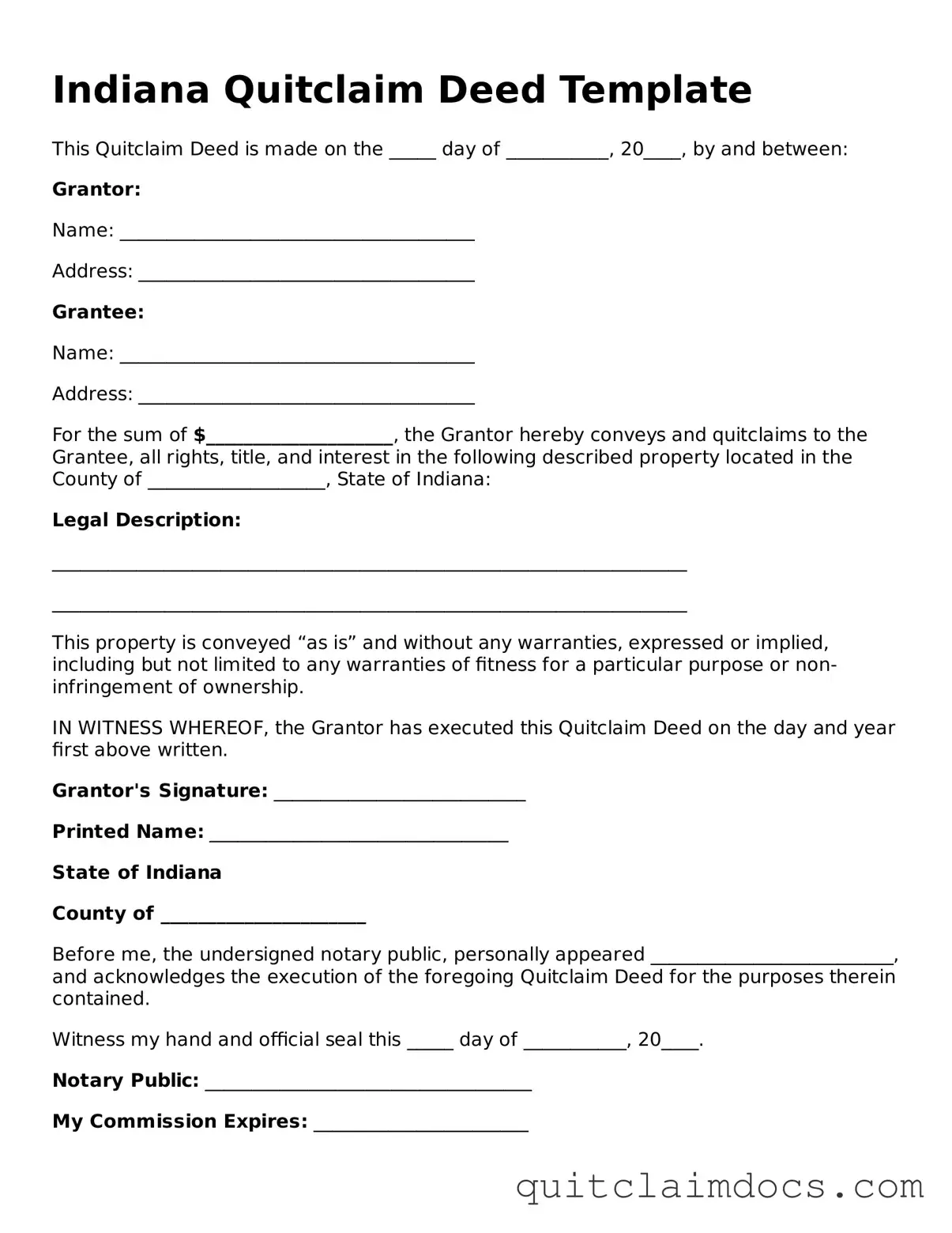Indiana Quitclaim Deed Template
This Quitclaim Deed is made on the _____ day of ___________, 20____, by and between:
Grantor:
Name: ______________________________________
Address: ____________________________________
Grantee:
Name: ______________________________________
Address: ____________________________________
For the sum of $____________________, the Grantor hereby conveys and quitclaims to the Grantee, all rights, title, and interest in the following described property located in the County of ___________________, State of Indiana:
Legal Description:
____________________________________________________________________
____________________________________________________________________
This property is conveyed “as is” and without any warranties, expressed or implied, including but not limited to any warranties of fitness for a particular purpose or non-infringement of ownership.
IN WITNESS WHEREOF, the Grantor has executed this Quitclaim Deed on the day and year first above written.
Grantor's Signature: ___________________________
Printed Name: ________________________________
State of Indiana
County of ______________________
Before me, the undersigned notary public, personally appeared __________________________, and acknowledges the execution of the foregoing Quitclaim Deed for the purposes therein contained.
Witness my hand and official seal this _____ day of ___________, 20____.
Notary Public: ___________________________________
My Commission Expires: _______________________
